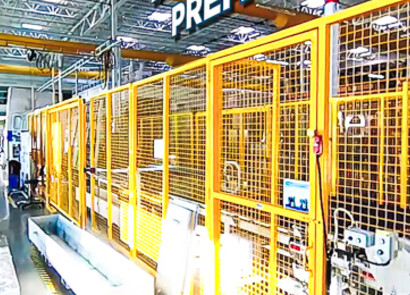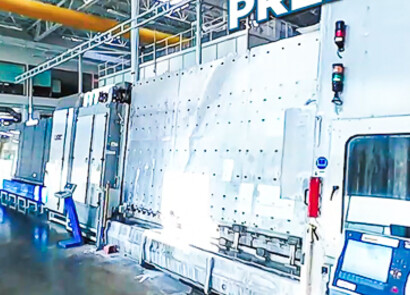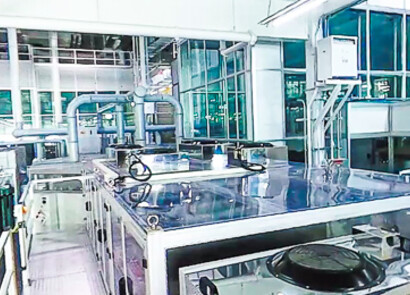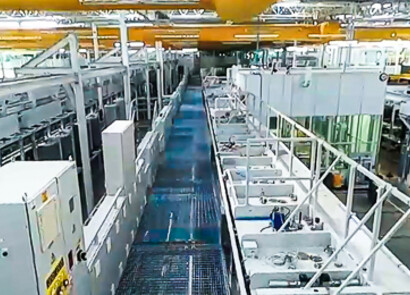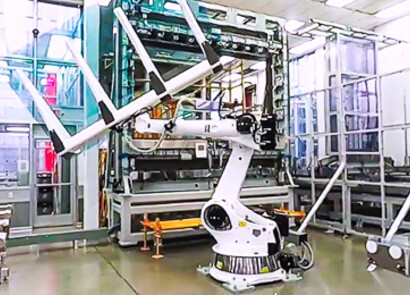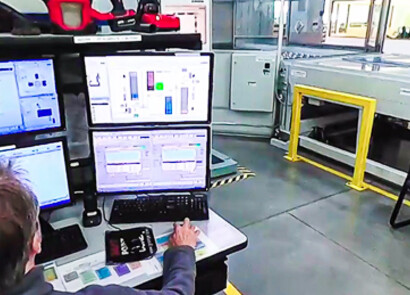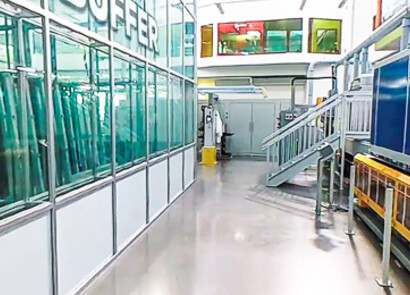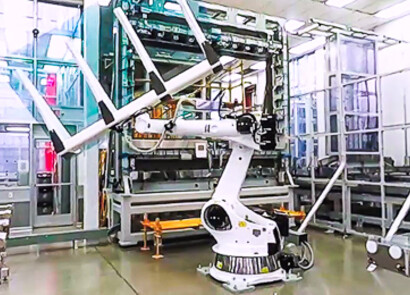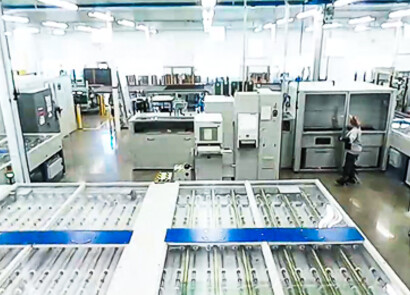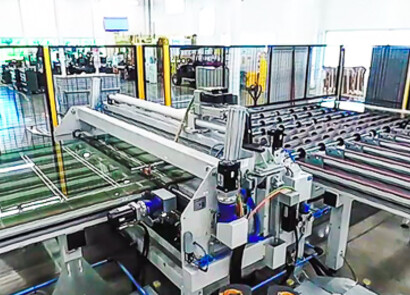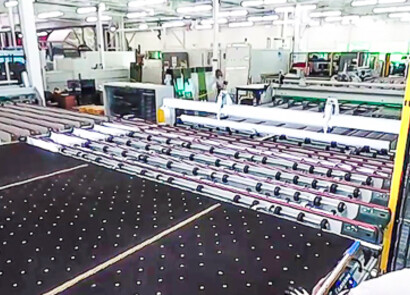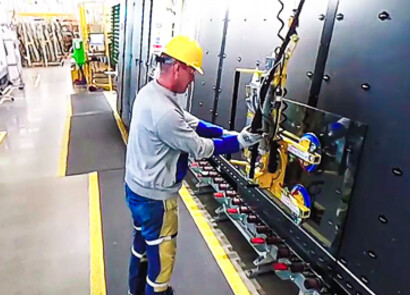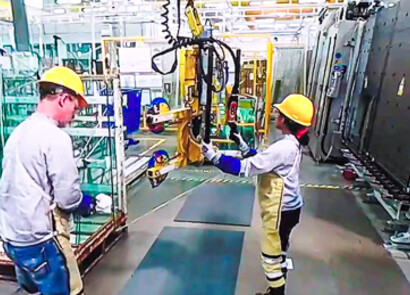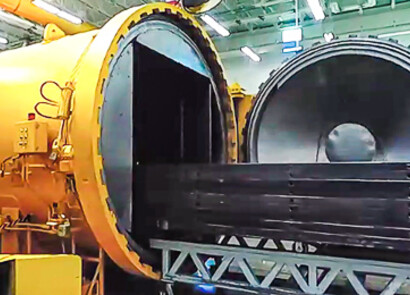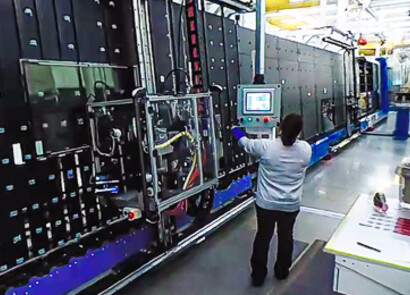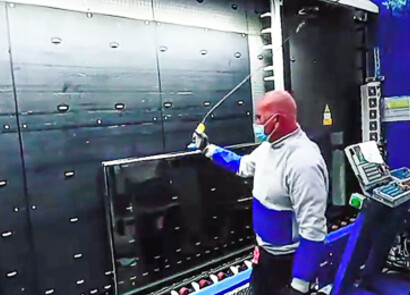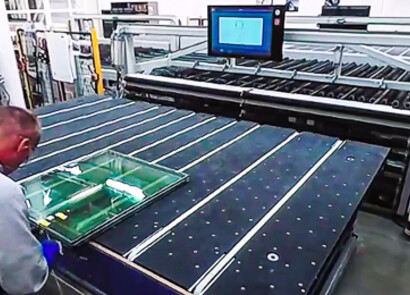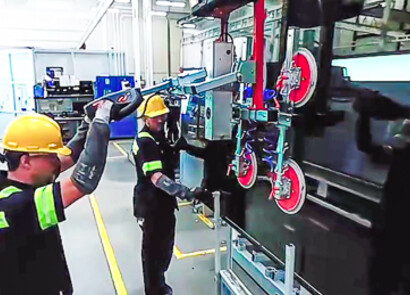Electrochromic Prep
In our “EC Prep” area, we start with a 6 x 10 ft (1,8 x 3 meters) piece of glass. We prepare the glass for coating by trimming it, grinding the edges, washing it thoroughly, and scanning it for defects. If the glass meets our rigorous standards, it’s ready to be coated.
Coating Process
This section of the manufacturing facility is where we apply our proprietary electrochromic stack, create an electrical path, and apply busbars to facilitate tinting. The glass travels through a hot coater, our “P1 loop,” a cold coater, and our “P2 / P3 loop.”
Thermal Laser Separation and Lamination
Next, we cut the glass into the desired shape and size with our state-of-the-art thermal laser separation machine. In the lamination area, the glass is laminated to a support lite to create more structural strength. Then we cure the device under heat and pressure in an autoclave.
Insulating Glass Unit Build
In this area, the team builds the complete insulating glass unit, or IGU, to the customer’s specifications. This involves attaching a stainless steel frame, filling the unit with gas (sometimes a specialty gas like argon or krypton), wiring the unit, and sealing it up.
Final Test
We expect every SageGlass IGU that leaves our facility to be of the highest possible quality. At Final Test, we power cycle the IGUs to exercise the films, view each unit in a tinted state in front of a backlight, and conduct more advanced testing on samples from each batch.
